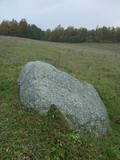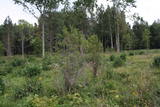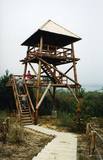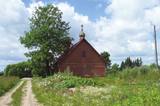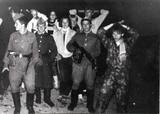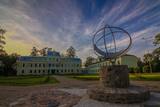| Nr | Name | Beschreibung |
|---|---|---|
|
Der Bau der Valmiera–Burg wurde 1283 angefangen. Im Laufe des Nordkrieges (1702) wurde die Burg verbrennt, aber am Ende des 17. Jh. wurden die Außenmauern der Stadt abgebaut. Es sind die Ruinen der Burg und die Reste der anderen mittelalterlichen Befestigungsanlagen erhalten. |
||
|
The loveliest views of the local cultural and historical treasures (the Āraiši lake castle, the Lutheran church, the parsonage, Medieval castle ruins – all of these cultural monuments). The hillocks of the area which offers this view can be found in the immediate proximity of the Āraiši windmill and the Drabeši-Āraiši road.
|
||
|
Das Café befindet sich im Zentrum von Ludza. Hier kann man Gerichte aus einer vielfältigen Speisekarte und auch Tagesangebote wählen. Ein besonderes Angebot des Kochs sind Süßwasserische aus den Seen der Region Latgale. Lettische Küche: Speisen, bei deren Vorbereitung Hechte, Schleien, Karpfen und Zander verwendet werden. Während der Wintersonnenwende werden auf Bestellung Blutwürste, Bratwürste und Schweinerüssel vorbereitet. Das besondere Gericht: Fischkäse: kalte Vorspeise aus gemahlenem Fisch mit Zutaten. |
||
|
Der Töpfer Stanislavs Vilums widmet sich der traditionellen Schwarzkeramik und verwendet dazu Ton aus Lettgallen. Dabei verwendet er keine industriellen Werkzeuge und der Brandofen wird mit Holz geheizt. Die Arbeit mit der Töpferscheibe wird demonstriert und der Brennprozess erläutert. Man kann versuchen, selbst mit Ton zu arbeiten. Die Töpferwaren stehen auch zum Verkauf. |
||
|
Dieser Naturpark ist der schönste und ausgeprägteste Teil der Nanema-Hügel in Nordkurzeme. Das Ziel ist, die Hügel von Talsi zu schützen. Es ist eine der reizvollsten Gegenden von Kurzeme mit kleinen, aber ausgeprägten Hügeln und Schluchten dazwischen. Es gibt kleine, aber ziehmlich tiefe Seen in diesem Gebiet – die Seen Ābeļi, Čumals, Sirdsezers usw. Einige von ihnen erinnern an tiefe Krater. Das Terrotorium eignet sich sehr gut für aktive Touristen – Wanderer (es gibt Naturpfade), Radfahrer usw.
|
||
|
Atrodas Pļaviņu HES ūdenskrātuves krastā (R. Blaumaņa ielas galā) iepretim salai, uz kuras top Likteņdārzs. Baznīca (celta 1687. g.) ir vairākkārt atjaunota (1731., 1887.). Tagad redzamais tornis tapis par Stukmaņu muižas īpašnieku atvēlētajiem līdzekļiem. Baznīcā par mācītāju kalpojis Ernests Gliks. Padomju laikos ēkā atradies Stučkas vēstures un mākslas muzejs. Apmeklētāji var uzkāpt dievnama tornī (čuguna zvans!), kā arī aplūkot mākslinieka A. Dobenberga gleznas. Baznīca ir atvērta un apskatāma arī no iekšpuses. |
||
|
One of few places in Latvia (around 1 km to the North from Lapmezciems) where used to be beautiful juniper meadows. Since no agriculture activity (grass cutting, cattle grazing) has been implemented in the area, juniper meadows are overgrowing and disappearing. To save the area sustainable management is needed. Slitere National Park with Blue Mountain cliff and Slitere lighthouse is located in short distance from Kadiku nora (Juniper meadow).
|
||
|
Befindet sich südlich der Stadt Koknese auf einer Insel mit einem Verbindungsweg zum Ufer, die von den Stauwässern des Wasserkraftwerkes Pļaviņas umgeben ist. Das fundamentale Objekt unter freiem Himmel wurde zum Gedenken an all jene Bewohner Lettlands errichtet, die unter den totalitären Regimen gelitten haben. Die ersten Arbeiten erfolgten hier 2008. Der Autor dieses Garten-Landschaft Projektes ist der japanische Landschaftsarchitekt Shunmyo Masuno. Obwohl der Garten noch nicht fertig gestellt ist, wurde er schnell zu einem beliebten Touristik-Objekt. Das erste eigenständige Bauwerk, das hier errichtet wurde, ist die Aussichtsterasse mit Blick auf die Burgruine Koknese und die lutherische Kirche. Durch dieses offene Konzept kann man bei jedem wiederholten Besuch hier etwas Neues entdecken. So entsteht hier ein wichtiger historischer Gedenkort des lettischen Volkes, an dem sich auch Besucher beteiligen dürfen, wenn sie einen Stein mitbringen und ihn dort niederlegen. |
||
|
Ein altes, von Liven schon vom 5. – 6. Jh. bewohntes Gebiet. Im Jahr 1226 hat der Bischof Albert in der Mündung des Flusses Salaca am rechten Ufer eine Burg gebaut, die sich bis heute nicht erhalten hat. Auch die Entwicklung von Salacgrīva (ähnlich wie von Ainaži) war mit der Bildung des Hafens verbunden. In der Jahrhundertwende 19.-20. Jh. wurde Salacgrīva zu einem bedeutenden Transport- und Umladungsknoten für die in Nord-Vidzeme hergestellten Waren (besonders für Holz). Während der Sowjetzeit wurde im nördlichen Teil von Salacgrīva der Park Zvejnieku parks (Fischerpark) mit einem der besten Stadien der lettischen Kleinstädte und mit einer Freilichtbühne eingerichtet. Während dieser Zeit ist auch in der ganzen Sowjetunion die Produktion – besonders die Sprotten – der Fischverarbeitungsfabrik Brīvais vilnis bekannt. Salacgrīva ist einer von den zwei Orten in Lettland, wo die Neunaugen immer noch mit der alten Methode – mit den Fischzäunen – gefischt werden. |
||
|
The viewing tower was built quite recently. At its foot is a location for relaxation. It offers a good view of one of the curves of the Daugava River – the Adamova curve. A bit beyond is the Curves of Daugava Nature Park. Along the tower is the “Saulkrasti Trail” bicycle route.
|
||
|
Der als Naturdenkmal geschützte dendrologische Park Varkava befindet sich in der Gemeinde Upmala und nimmt eine Fläche von 2,7 ha ein. Seit 2001 unter Schutz stehend wird der Park von der Bezirksverwaltung Varkava betrieben. Den vorhandenen großen Eichen (etwa 200 Jahre) zufolge, wurde der Park zu Beginn des 19. Jh. angelegt. Weitere Jungbäume wurden zum Ende des 19. Jh. gepflanzt. Im Park stehen vor allem heimische Bäume und Sträucher: Ahorn, Eschen, Fichten, Zitterpappeln, Eichen, Bruch-Weide, Linde, Ulme, Haselnuss, Pfaffenhütchen, Ahlkirsche u.a. Daneben gibt es auch mindestens 10 exotische Arten, darunter Eschen-Ahorn, Zucker-Ahorn, Weichhaariger Pfeifenstrauch, Populus suaveolens, Silber-Weide, Ungarischer Flieder, Krim-Linde, Sommer-Linde. |
||
|
Salīdzinoši liela un cilvēka mazskarta teritorija ziemeļos no Lubāna ezera, kas izceļas ar lielu purvu un mitro mežu, kā arī tajā dzīvojošo organismu daudzveidību. Cauri teritorijas austrumu daļai tek Aiviekste. Dabas liegums ir grūti pieejams, tajā nav izveidota ar tūrismu saistīta infrastruktūra, tādēl vislabākais veids ir to aplūkot no Lubānas - Gaigalavas ceļa, kā arī putnu vērošanas torņa pie Gomeļa ezera (Gūmelis), kurš gan 2007. g. rudenī bija cietis no apmeklētāju vandālisma. Teritorija ietilpst Lubāna mitrāja kompleksā.
|
||
|
Rimši Old-Believers Prayer House. The church was built in the
beginning of the 20th century.
|
||
|
Lina, vilnas apģērbu šūšana, galdautu, dvieļu, jostu u.c. tekstilizstrādājumu šūšana. Tērpu darināšana nav tikai darbs, bet arī aicinājums. Tas palīdz izgatavot vissarežģītākās tērpu konstrukcijas. Nemitīgā zināšanu papildināšana kursos ļauj veiksmīgi dzīvot līdzi mainīgajām modes prasībām. Paralēli individuālajiem pasūtījumiem tiek izgatavoti gan apģērbi, gan citi šūtie izstrādājumi tirdzniecībai. |
||
|
The Soviet Border Guard arrived at Lapmežciems (its border with Ragaciems) in the mid-1960s and left in 1991. Some 50 military personnel were stationed here. The military personnel and local residents organised various events and celebrations. The only thing that worried locals was a radar which was said to cause various problems. The zenith missiles were dismantled and taken away in 1991. An apartment building is still on what was then the military base. |
||
|
The tour takes through all three Baltic States – Lithuania, Latvia and Estonia. The route visits the capital cities and some of the most attractive cities and towns in Mid - Baltics. The tour starts in Vilnius, the capital city of Lithuania. Kaunas is the second largest Lithuanian city, standing at the confluence of the Nemunas and Neris Rivers. Riga, the capital city of Latvia, offers a variety of cultural experiences and entertainment. Sigulda is famous for its landscapes and medieval castles. Cēsis is one of the most charming towns in Latvia with many attractions ranging from medieval heritage to nice restaurants, exhibitions and festivals. Valmiera offers art galleries, museums, nature trails and Valmiermuža beer from the famous local brewery. Tartu in Estonia is a university town, with some very popular tourist attractions such as the interactive AHHAA science centre, the largest in Baltic countries. Finish the tour in Tallinn – the capital city of Estonia. Tourist information centres in cities and towns will help you with maps, information on sights, attractions and guided tours, food, shopping and public transport. |
||
|
~6,000, including nearly 300 types of dahlias, 120 types of azaleas, and 100 types of outdoor rhododendrons.
The conservatories of the botanic gardens contain various exotic and tropical plants and fruit trees, including lemon, banana, pineapple, fig, olive, avocado and coffee bean plants. There is a broad collection of cacti, as well as the largest collection of palm trees in Latvia. Outdoors, there are lots of winter-resistant plants, medicinal plants, and poisonous plants. The plants are arranged in systematic groups – something which is typical only of the botanic gardens of universities. This is the only place in Latvia where you can see so many flowering magnolias in a single place in the spring.
Outdoors you will find the Sweet Chestnut (Castanea sativa), the Gingko (Ginkgo biloba), the Dawn Redwood (Metasequoia glyptostroboides), the White Mulberry (Morus alba), and the Common Walnut (Juglans regia). The conservatories include several types of the highland tamarin (Araucaria bidwillii and A. heterophylla), the Wollemia Pine (Wollemia nobilis), the Moreton Bay Fig (Ficus macrophlla), the Water Lily (Victoria regia), etc.
|
||
|
The large farm is to the South of the centre of Lone, producing apples, pears, plums, cherries, strawberries and black currants. It stores apples during the whole winter. You can help to pick the fruit and berries and purchase them for yourself. |
||
|
Pirmie dokumenti par Kokmuižu atrodami 1601. gada zemes revīzijas pierakstos. Tur sniegtā informācija vēsta, ka Kokmuiža pastāvējusi jau 1560. gadā. Taču 1880. gadā vācu muižnieks sākas celt kungu māju neobaroka stilā. 20. gs. sākumā tā tika izpostīta, bet 1937. gadā to pārveidoja par skolu. Kokmuižā kādreiz atradusies alus darītava. Tas bija laika periodā no 17.- 20. gs. Tā bija viena no slavenākajām alusdarītavām visā Vidzemes guberņā. Mūsdienās var izstaigāt muižu pats vai gida pavadībā. Var aplūkot kungu māju, staļļu ēkas, muižas pārvaldnieka namu, bibliotēku, ekspozīciju, abas klētis un alus darītavas pagrabu, kā arī sfērisko saules pulksteni.
|
||
|
Diese lange Wandertour ist für erfahrene Wanderer vorgesehen, die einen großen Teil der Küste von Lettland und Estland zurücklegen und sich einen vielseitigen Eindruck von der abwechslungsreichen Landschaft, der Natur, den Vögel und den Tieren der Ostseeküste verschaffen möchten. Der Baltische Küstenwanderweg führt teilweise Sandstränden entlang, und teilweise auch Steinstränden mit kleinen Kieselsteinen. Manchmal schlängelt sich der Weg durch Küstenwälder oder durchquert ein Fischerdorf. In Estland gibt es viele Auen, Lagunen und flache Buchten. Deshalb muss man stellenweise über Küstenpfade und -wege gehen. Am Ende der Route ist schon mehr die nördliche Natur von Estland zu verspüren. Ein Teil der Route führt durch wenig bewohnte Küsten, an denen Sie mit sich alleine sein können. Sie werden aber auch bemerkenswerte Städte besuchen. Sie werden beide Hauptstädte besichtigen: Rīga und Tallinn. Genießen werden die Gastfreundschaft der Kurstädte Jūrmala, Pärnu und Haapsalu. Bei der Wanderung werden Sie auch die Regionen der kleinen ethnischen Kulturen kennenlernen: die Liven in Lettland und die Einwohner der Insel Kihnu in Estland. |
||




